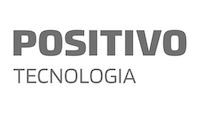Web-Based Enterprise Management (WBEM) FAQs
- What is WBEM?
- What is included in WBEM?
- What are the benefits of WBEM? Why is it important?
- Are there open source implementations of WBEM?
- How is work completed on WBEM?
- How do I participate in the development of WBEM?
What is WBEM?
WBEM is a set of management and Internet standard technologies developed to unify the management of distributed computing environments, facilitating the exchange of data across otherwise disparate technologies and platforms.
What is included in WBEM?
The DMTF has developed a core set of standards that make up WBEM, which includes the Common Information Model (CIM), CIM-XML, CIM Query Language, WBEM Discovery using Service Location Protocol (SLP) and WBEM Universal Resource Identifier (URI) mapping. In addition, the DMTF has developed a WBEM Management Profile template, allowing for simplified profile development to deliver a complete, standalone definition for the management of a particular system, subsystem, service or other entity.
What are the benefits of WBEM? Why is it important?
WBEM is extensible, facilitating the development of platform-neutral, reusable infrastructure, tools and applications. In addition to its use by vendors, end users and the open source community, WBEM is enabling other industry organizations to build on its foundation in areas including Web services, security, storage, grid and utility computing.
Are there open source implementations of WBEM?
Yes, open source implementations of WBEM are available from OpenPegasus, OpenWBEM, SBLIM, WBEM Services and WBEMsource.
How is work completed on WBEM?
Advancements in the WBEM specifications (with the exception of CIM*) are handled by the DMTF’s WBEM Infrastructure and Protocols Working Group. This working group focuses on how a client implementation interacts with a CIM-based infrastructure, and how these CIM-based infrastructures interact with each other. This involves specifying a communication architecture and the protocols used in this architecture.
How do I participate in the development of WBEM?
If you are interested in contributing to WBEM and the future of distributed management, DMTF members can sign-up on the WBEM Infrastructure and Protocols Working Group’s Web site by clicking “Join this Group” at the top of the page.
Non-members can participate in this working group by joining the DMTF. Just visit the Join Us section of the DMTF Web site for more information.
*Work on the models included in CIM takes place in virtually all DMTF working groups, and is managed by the DMTF Technical Committee.








